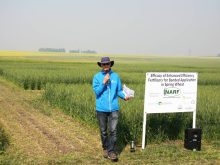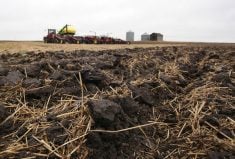Fusarium infection is still new to many Alberta producers due in part to action taken eight years ago when it was still more a concept than a reality. That has changed.
Ron Howard of Alberta Agriculture said the same committee that suggested legislation that helped limit the spread of infection in Alberta is now dealing with the realities that it is established.
Rules that limited the import and use of potentially infected seed, hay and straw and programs offering subsidized seed testing and other measures won’t have the same effect on the disease’s progress now that it is prevalent in central and southern Alberta.
Read Also

Russian wheat exports start to pick up the pace
Russia has had a slow start for its 2025-26 wheat export program, but the pace is starting to pick up and that is a bearish factor for prices.
“The plan was getting old and we began amending it in 2009,” he said. As part of the evolution of rules, the Fusarium Action Committee had made some suggestions this year that would have designated counties or regions as free of the pest but some producers and seed growers objected.
“Growers that were clean of the disease and made efforts to keep if off their farms might be in counties that have a lot of it. They felt they might be improperly discriminated against. So the committee rescinded their 2010 decision and will revisit the issue this January,” said Howard.
Shauna Fankhauser works for the Southern Applied Research Association in Lethbridge and farms near Claresholm. She said the rules should change to reflect the change in infection rates.
“SARA is studying irrigation and fungicide practices in southern Alberta. We have nine field-scale experiments looking at best management practices.”
Howard said that type of research within the region is critical to ensuring that regulations are created based on facts appropriate for Alberta.
Alberta grain and cereal forage producers should be taking an interest in fusarium due to the nature of the spread of the disease, said Fankhauser.
“Not only do you need to work to reduce the infection, (but) if your neighbour has a feedlot and has that corn-barley-corn rotation, those spores can blow onto your land and there is no best practice to avoid that.,” she said. “This is an agricultural community issue that affects all of us.”














